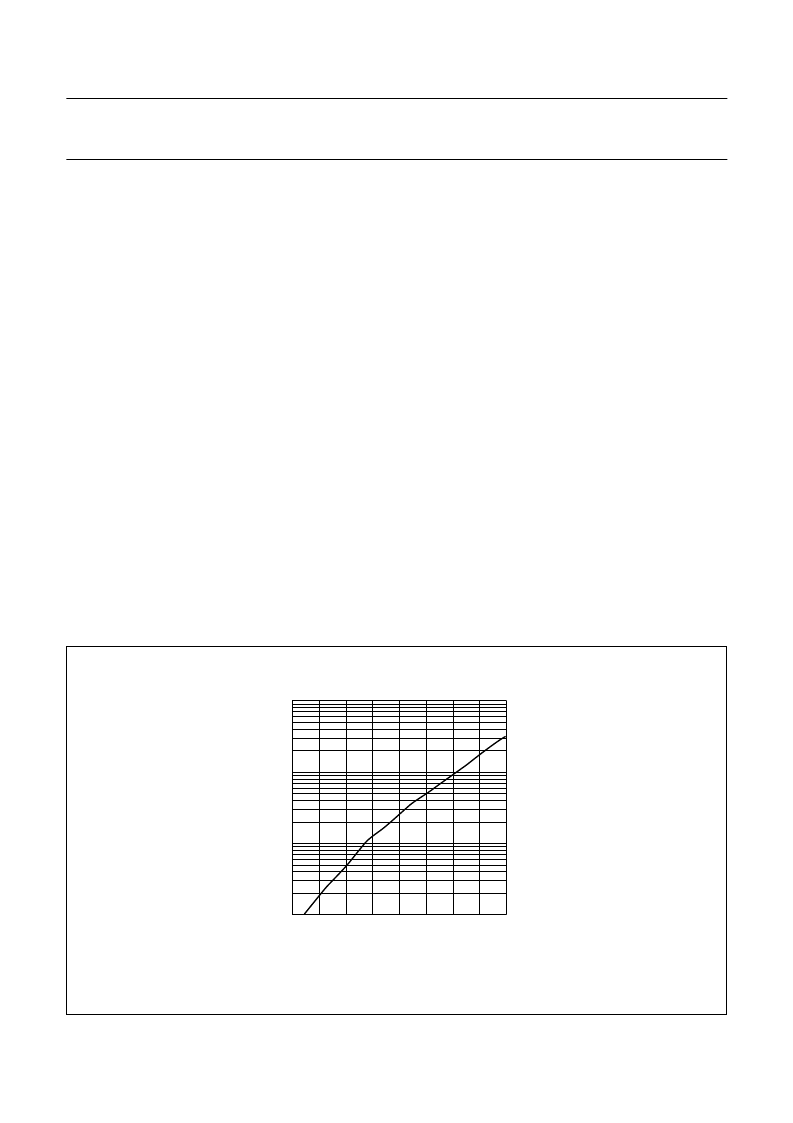- 您現(xiàn)在的位置:買賣IC網(wǎng) > PDF目錄382381 > PCF5077T (NXP SEMICONDUCTORS) Power amplifier controller for GSM and PCN systems PDF資料下載
參數(shù)資料
| 型號: | PCF5077T |
| 廠商: | NXP SEMICONDUCTORS |
| 元件分類: | 通信及網(wǎng)絡(luò) |
| 英文描述: | Power amplifier controller for GSM and PCN systems |
| 中文描述: | SPECIALTY TELECOM CIRCUIT, PDSO16 |
| 文件頁數(shù): | 16/24頁 |
| 文件大?。?/td> | 120K |
| 代理商: | PCF5077T |

1997 Nov 19
16
Philips Semiconductors
Preliminary specification
Power amplifier controller for GSM and
PCN systems
PCF5077T
A
DJUSTMENT OF THE HOME POSITION
The 6-bit DAC for V
HOME
determines the start point of the
burst in the time template. Curve 2 in Fig.8 shows what
happens when V
HOME
is too low. The burst starts too late
and the up-ramping of the power is too steep. The steep
up-ramping results in a wide transient spectra. The RF
input power shall be switched off when the TRIG signal is
LOW to keep the
70 dB margin before the burst.
The home position has to be adjusted for each mobile
phone because of DAC tolerances and individual PA
characteristics.
The temperature coefficients for V
HOME
(
2 and
4 mV/K)
are used to compensate the temperature shift of the PA
control curve. Therefore the PA and the controller shall be
placed nearby on the printed-circuit board. Additionally it
has to be considered that the temperature of the PA and
PCF5077T are different because the PA heats up itself.
Software may help to adapt V
HOME
to different
temperatures.
A
DJUSTMENT OF
V
KICK
After the falling edge of HPA the integrator starts to
increase the control voltage up to the position of V
KICK
where the PA should have reached its active region.
Increasing V
KICK
at high power level makes the up ramping
of the burst smoother and improves the transient spectra.
V
KICK
must be reduced for low level of V
PL
to avoid that
both voltages become equal. Setting V
KICK
to minimum
value for the lowest power level can be sufficient.
At low power level the burst will start later because of the
bend sensor curve (see Fig.7). The trigger pulse has to be
started up to 3 bits earlier for the lowest power level to
avoid that the power is ramped up too late for the first data
bits of the burst.
L
IMIT FOR CORRECT DOWN
-
RAMPING
The maximum RF power that the power module in
saturation is able to deliver depends on RF input power,
transmit frequency, supply voltage, temperature and load
impedance. The maximum V
PL
must be matched to the
worst case output power and then reduced by 1 dB when
the PCF5077T is used in closed loop mode.
Curve 2 in Fig.9 shows what happens when the PA is
driven into saturation. The down-ramping of the power is
getting too steep and therefore the transient spectra will be
too wide. The 1 dB margin is necessary because of the flat
PA control curve at high power level. The loop needs more
time to reduce the power during the down-ramping and the
control voltage increases. The high control voltage forces
the power quickly down when the steep region of the
control curve is achieved. The steep down-ramping results
in a wide transient spectra.
Fig.7 Sensor voltage as a function of output power (diode BAT62).
handbook, halfpage
35
5
5
0
15
1
10
1
10
2
MGK915
25
30
10
20
VS
(V)
P (dBm)
相關(guān)PDF資料 |
PDF描述 |
|---|---|
| PCF5078 | Power amplifier controller for GSM and PCN systems |
| PCF5078T | Power amplifier controller for GSM and PCN systems |
| PCF5079 | Dual-band power amplifier controller for GSM, PCN and DCS |
| PCF5079HK | 3455RMG Series Phenolic Manual Reset Thermostats |
| PCF5079T | Dual-band power amplifier controller for GSM, PCN and DCS |
相關(guān)代理商/技術(shù)參數(shù) |
參數(shù)描述 |
|---|---|
| PCF5078 | 制造商:PHILIPS 制造商全稱:NXP Semiconductors 功能描述:Power amplifier controller for GSM and PCN systems |
| PCF5078T | 制造商:PHILIPS 制造商全稱:NXP Semiconductors 功能描述:Power amplifier controller for GSM and PCN systems |
| PCF5078T/F2 | 制造商:NXP Semiconductors 功能描述:IC,POWER CONTROL/MANAGEMENT,CMOS,TSSOP,8PIN,PLASTIC |
| PCF5079 | 制造商:PHILIPS 制造商全稱:NXP Semiconductors 功能描述:Dual-band power amplifier controller for GSM, PCN and DCS |
| PCF5079HK | 制造商:PHILIPS 制造商全稱:NXP Semiconductors 功能描述:Dual-band power amplifier controller for GSM, PCN and DCS |
發(fā)布緊急采購,3分鐘左右您將得到回復(fù)。